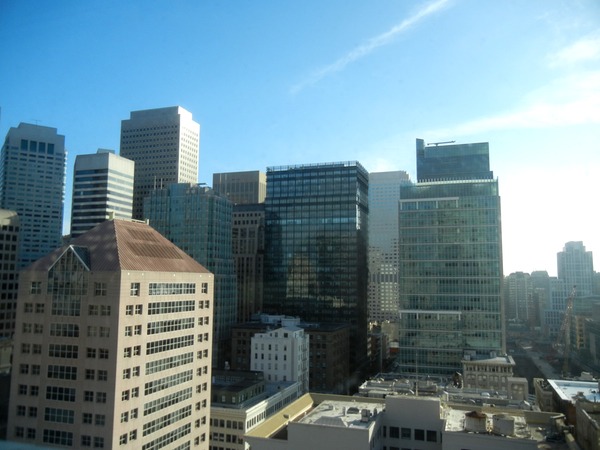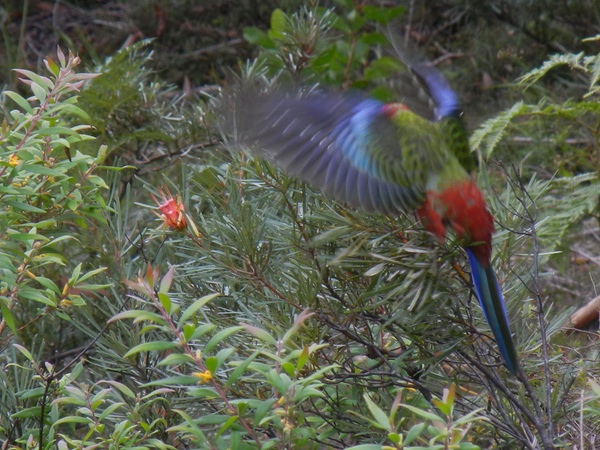 For the last few week’s I’ve been using Vodafone Australia’s new 4G network, and I must say it ain’t bad at all. Here’s quite a long post about what I’ve experienced.
For the last few week’s I’ve been using Vodafone Australia’s new 4G network, and I must say it ain’t bad at all. Here’s quite a long post about what I’ve experienced.
Since Saturday 8 June 2013 — that is, since about a week before the network was launched to the public — I’ve used Vodafone’s network as my primary data link to the internet, via a Samsung Galaxy S IV 4G handset that Vodafone loaned me, along with a SIM that gave me uncapped data. Generally I used that smartphone as a Wi-Fi hotspot for my everyday internet use.
Normally I use Telstra’s Next G 4G network — or their 3G network outside 4G coverage areas. The hardware is either a Sierra Wireless pocket Wi-Fi hotspot, or sometimes my Samsung Galaxy S III 4G handset configured as a Wi-Fi hotspot. So what you’re about to read is, I think, a reasonable comparison.
That said, I’d call this a “trial”, not a “test”. I was not rigorous at all about this, and the results only reflect what I experienced on the days in question. Your mileage may vary.
Key Observations
- I often work on the train between Sydney and the Blue Mountains. So, on Saturday 8 June, I did a side-by-side comparison. With all other data usage removed from the handsets, I did speed tests as speedtest.net as they sat on my lap. On the train. The detailed results are over the fold. As you’ll see, Vodafone’s network was often faster than Telstra’s, especially where Telstra was likely to suffer congestion. This is unsurprising: there weren’t any customers on Vodafone’s network yet.
- Over the three weeks of the trial, my general impression was that where both Vodafone and Telstra had 4G coverage, they offered similar speeds. In highly congested locations, such as the Sydney CBD, North Sydney or Newtown, Vodafone often pulled ahead. But Vodafone obviously has far less geographic coverage for now. See below for the maps.
- Up at my Blue Mountains base near Wentworth Falls, neither Vodafone nor Telstra had 4G coverage, only 3G. While I didn’t do speed tests there, as a user I found no noticeable difference between the two networks. That is, there were no occasions when I felt the urge to whinge that Vodafone’s network was causing me more problems that Telstra’s usually did. Both seemed to have the same difficulty punching a signal through a eucalypt forest that’s waving in the wind. That’s not Science, obviously, but it says… something. Probably that there’s not much to choose between the two networks in that location, given the sort of things I do.
- On my regular train runs up and down the mountains, there was no real experiential difference between Vodafone’s network and Telstra’s — except, of course, where Vodafone has no 4G. Apart from one factor, that is. My impression was that the Telstra handset was better at noticing when 4G became available and switching to that, whereas the one on Vodafone would stay on 3G all the way into Central even though there’s plenty of 4G areas — but I didn’t test this properly.
- Using mobile broadband is a very different experience when you’re not worried about how many gigabytes of data you’re sucking down. As I wrote the other week, the promise of mobile broadband is years away.
Overall, it would appear that Vodafone is rolling out a 4G network that will match Telstra’s in terms of performance, at least once the coverage is in place. Assuming there’s coverage where you need it, the choice will come down to the pricing and support, as always. Whether this will be enough for Vodafone to win back the customers they’ve lost is another question.
Continue reading “Vodafone Australia’s new 4G network ain’t bad”
![]() Third time’s the charm, right? My third radio spot on The Great SIM Heist was for 1395 FIVEaa in Adelaide on Wednesday afternoon.
Third time’s the charm, right? My third radio spot on The Great SIM Heist was for 1395 FIVEaa in Adelaide on Wednesday afternoon.
 On Friday, The Intercept published some astounding claims under the headline
On Friday, The Intercept published some astounding claims under the headline  For the last few week’s I’ve been using Vodafone Australia’s new 4G network, and I must say it ain’t bad at all. Here’s quite a long post about what I’ve experienced.
For the last few week’s I’ve been using Vodafone Australia’s new 4G network, and I must say it ain’t bad at all. Here’s quite a long post about what I’ve experienced.
